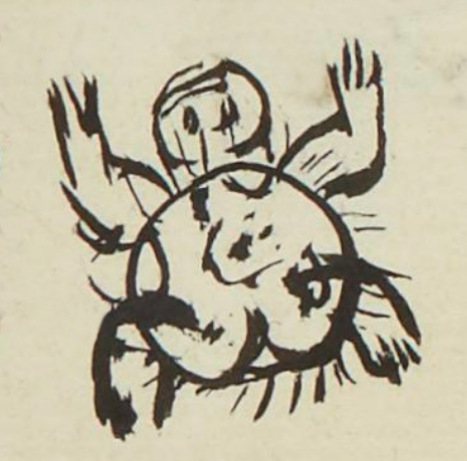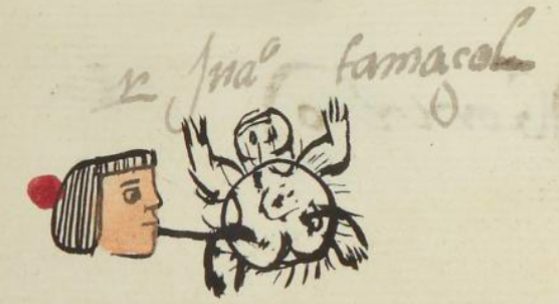Tamazol (MH516r)
This black-line drawing of the simplex glyph for the personal name Tamazol shows a bird's eye view of a toad (tamazolin} with its four legs extended. Its eyes are open. Its body is mottled.
Stephanie Wood
A stone sculpture at the National Museum of Anthropology and History in Mexico City is a toad with a carving of the deity Chalchiuhtlicue on the underside. Ian Mursell writes: "Because toads emerged from their burrows in the earth at the onset of the rainy season in Mesoamerica, they were not only associated with the earth, but also became the prime symbol of water. The Aztecs therefore pictured Tlaltecuhtli, supernatural force of the earth and patron of water, crouching like a toad, with his legs outstretched as he supports the universe on his shoulders. On the base of this sculpture - the toad’s tummy - is a relief of the chief water goddess, Chalchiuhtlicue, which recreates the quincunx, the five parts of the cosmos, with the animal at its centre. The naturalistic carving of the toad clearly shows the slight bulges on the head in which it stores a highly toxic substance to protect it from its enemies. Native shamans knew of this substance’s properties and used it to prepare a ritual dream-making drug." This remark is published in Mexicolore and draws from Aztecs (Royal Academy of Arts exhibition catalogue, London, 2002), p. 415. See also art historian Renee McGarry's short piece in Mexicolore on frogs and toads.
Stephanie Wood
Juo tamaçol
Juan Tamazol
Stephanie Wood
1560
toads, sapos, animales

tamazol(in), toad, https://nahuatl.wired-humanities.org/content/tamazolin-0
El Sapo
Matrícula de Huexotzinco, folio 516r, World Digital Library, https://www.loc.gov/resource/gdcwdl.wdl_15282/?sp=111&st=image
This manuscript is hosted by the Library of Congress and the World Digital Library; used here with the Creative Commons, “Attribution-NonCommercial-ShareAlike 3.0 License” (CC-BY-NC-SAq 3.0).





